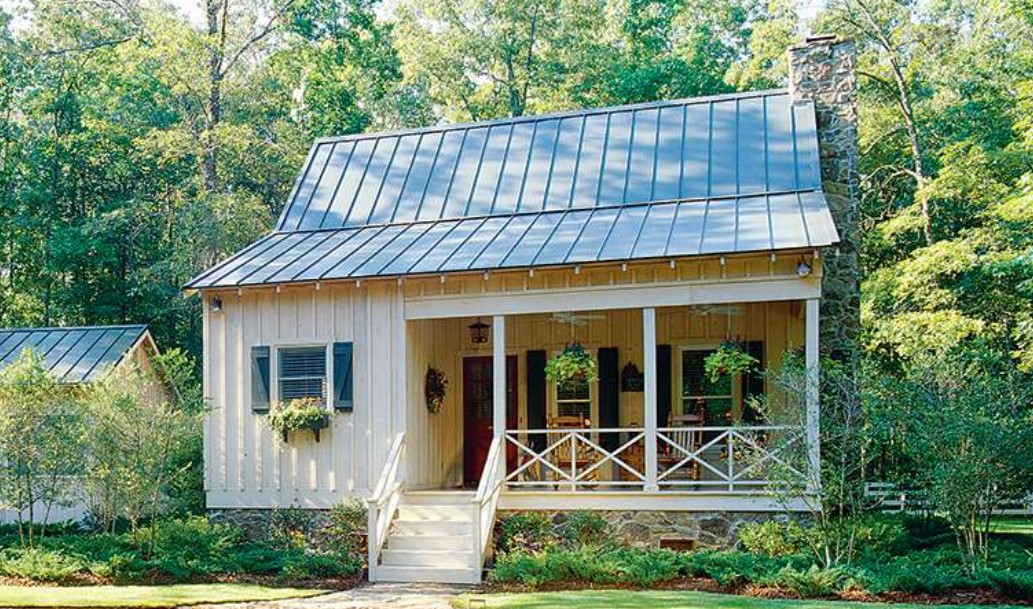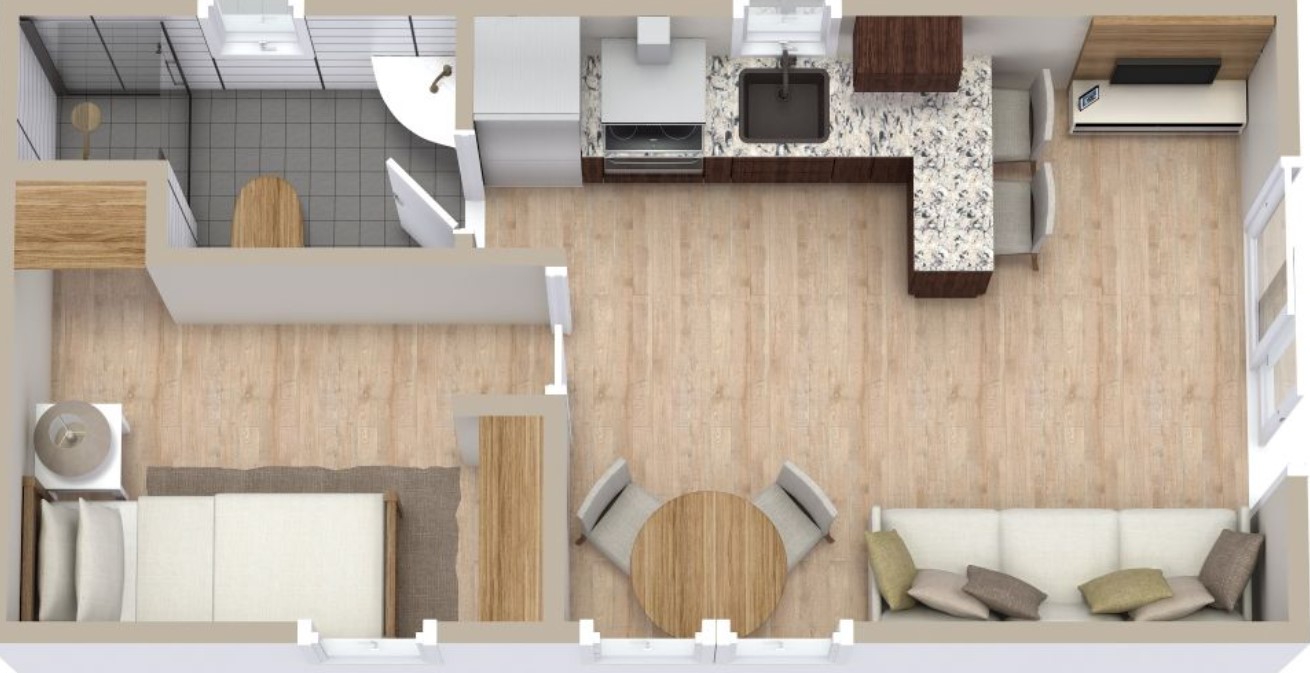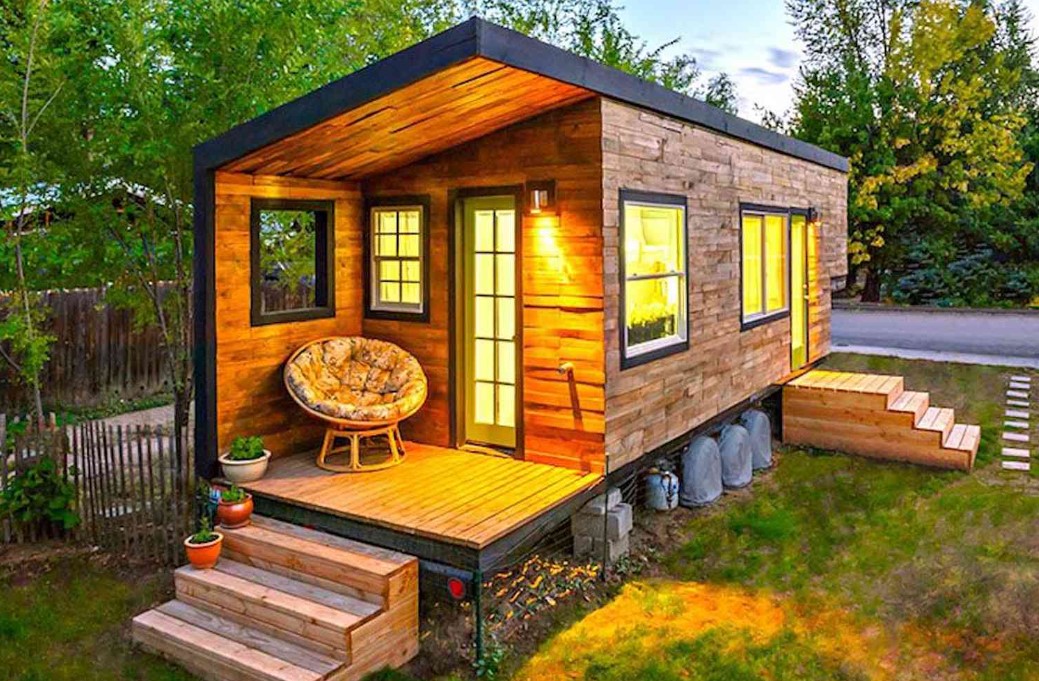Tiny houses have become increasingly popular as more people embrace minimalist living, sustainability, and affordability. These small yet functional homes offer a unique lifestyle that focuses on simplicity and efficiency. Designing a tiny house requires careful planning to make the most of the limited space. This article explores various aspects of tiny house plans, providing insights into creating a comfortable and practical tiny living space.
What is a Tiny House?

A tiny house is a compact, efficient, and often mobile living space designed to maximize functionality and minimize footprint. Typically ranging from 100 to 400 square feet, tiny houses embrace a minimalist lifestyle, focusing on simplicity, sustainability, and affordability.
Key Characteristics of Tiny Houses

- Small Footprint: Tiny houses are much smaller than traditional homes, usually occupying less than 400 square feet. This reduced size encourages efficient use of space and resources.
- Mobility: Many tiny houses are built on trailers, making them mobile. These Tiny Houses on Wheels (THOW) allow owners the flexibility to relocate their home as desired.
- Sustainability: Tiny houses often incorporate eco-friendly materials and energy-efficient systems. This can include solar panels, composting toilets, and recycled building materials.
- Cost-Effective: The smaller size and often simpler design of tiny houses mean they are generally less expensive to build and maintain compared to traditional homes. This makes them an attractive option for those looking to reduce their living expenses.
- Minimalist Lifestyle: Living in a tiny house requires prioritizing essential items and eliminating excess. This minimalist approach often leads to a simpler, less cluttered life.
- Types of Tiny Houses
Types of Tiny Houses

The tiny house movement has gained tremendous popularity in recent years, appealing to those seeking a minimalist lifestyle, affordability, and sustainability. Tiny houses come in various styles and designs, each catering to different needs and preferences. Here, we explore the most common types of tiny houses, highlighting their unique features and benefits.
1. Tiny House on Wheels (THOW)
Tiny houses on wheels are the most recognized form of tiny homes. These portable houses offer flexibility and mobility, allowing homeowners to relocate as needed. Key features include:
- Mobility: Built on trailer platforms, they can be easily transported to different locations.
- Compact Design: Efficient use of space with multi-functional furniture and built-in storage.
- Customization: Highly customizable interiors to fit personal preferences and needs.
- Regulations: Often subject to RV regulations, which can vary by location.
- Off-Grid Capabilities: Many are designed to be off-grid with solar panels, composting toilets, and water tanks.
2. Tiny House on a Foundation
Tiny houses on a foundation are permanent structures, offering the benefits of traditional homes in a smaller footprint. Features include:
- Permanent Living: Fixed in one location, providing stability and a sense of permanence.
- Durability: Built to traditional home standards, offering longevity and resilience.
- Variety of Designs: Can be built in various architectural styles, from modern to rustic.
- Zoning and Permits: Subject to local building codes and zoning regulations, which can impact design and placement.
- Energy Efficiency: Often designed with energy efficiency in mind, using sustainable materials and technologies.
3. Shipping Container Homes
Shipping container homes are innovative and eco-friendly, repurposing old shipping containers into livable spaces. Characteristics include:
- Sustainability: Recycling used containers reduces waste and promotes sustainability.
- Structural Integrity: Containers are strong and durable, withstanding harsh weather conditions.
- Modular Design: Can be combined to create larger living spaces or multi-story homes.
- Industrial Aesthetic: Unique, modern look with an industrial feel.
- Customization: Interiors can be fully customized to include all modern amenities.
4. Bus Conversions (Skoolies)
Bus conversions, or “skoolies,” transform old school buses into functional tiny homes on wheels. Features include:
- Mobility: Like THOWs, skoolies offer the freedom to travel and explore different locations.
- Spacious Interiors: The length of a bus provides ample space for creative layouts.
- Unique Charm: Retaining elements of the original bus adds character and uniqueness.
- Self-Sufficiency: Often equipped with off-grid systems like solar power and composting toilets.
- Community: Skoolie owners often form tight-knit communities, sharing tips and experiences.
5. Yurts
Yurts are circular, tent-like structures traditionally used by nomadic cultures. Modern yurts provide a unique tiny living experience with the following features:
- Circular Design: Spacious and open interiors with a central support structure.
- Ease of Assembly: Can be assembled and disassembled relatively quickly.
- Eco-Friendly: Often made from sustainable materials and have minimal environmental impact.
- Versatility: Used for full-time living, vacation homes, or guest houses.
- Natural Aesthetic: Blend seamlessly with natural surroundings, offering a serene living experience.
6. Cob Houses
Cob houses are made from a natural building material composed of sand, clay, straw, and water. They offer a unique, eco-friendly living option with these characteristics:
- Sustainability: Made from readily available and sustainable materials.
- Energy Efficiency: Excellent thermal mass properties, keeping interiors cool in summer and warm in winter.
- Custom Shapes: Can be molded into organic, flowing shapes for a unique aesthetic.
- Durability: Properly built cob houses can last for centuries.
- Health Benefits: Natural materials contribute to healthier indoor air quality.
7. Tiny Prefab Homes
Prefab tiny homes are built off-site in factories and then transported to their final location. These homes offer several advantages:
- Speed of Construction: Built quickly and efficiently in controlled environments.
- Quality Control: High standards of construction and materials used.
- Cost-Effective: Often more affordable due to reduced labor costs and bulk material purchasing.
- Variety of Designs: Available in numerous styles and layouts to suit different tastes.
- Ease of Installation: Quick assembly on-site, minimizing disruption to the property.
8. Dome Homes
Dome homes are geodesic structures known for their strength and energy efficiency. Features include:
- Structural Integrity: Highly resistant to natural disasters such as earthquakes and hurricanes.
- Energy Efficiency: Excellent insulation properties, reducing heating and cooling costs.
- Unique Design: Futuristic and distinctive appearance.
- Open Interiors: Spacious, open-plan living areas with high ceilings.
- Sustainability: Often built with eco-friendly materials and designed for minimal environmental impact.
9. Treehouses
Treehouses are whimsical and enchanting, offering a unique living experience high above the ground. Key features include:
- Connection to Nature: Elevated among trees, providing stunning views and a serene atmosphere.
- Unique Architecture: Creative designs that blend with the natural environment.
- Adventure and Fun: Appeals to those with a sense of adventure and love for the outdoors.
- Customization: Can be designed to include all modern amenities and comforts.
- Privacy: Elevated position offers seclusion and tranquility.
10. Tiny Houseboats
Tiny houseboats combine the charm of tiny living with the freedom of life on the water. Characteristics include:
- Waterfront Living: Experience life on the water with beautiful, ever-changing views.
- Mobility: Can be moved to different locations, offering flexibility and adventure.
- Compact and Efficient: Designed to maximize space and functionality in a small footprint.
- Modern Amenities: Equipped with all necessary amenities for comfortable living.
- Sustainable Living: Often designed with eco-friendly systems for water and energy efficiency.
In conclusion, the diverse range of tiny house types offers something for everyone, from the adventurous nomad to the eco-conscious homeowner. Each type of tiny house brings unique benefits and challenges, allowing individuals to choose a style that best fits their lifestyle, preferences, and values.
Planning Your Tiny House

Embarking on the journey of building or purchasing a tiny house requires meticulous planning and consideration. From selecting the right design to navigating regulations and optimizing space, each step plays a crucial role in ensuring your tiny house meets your needs and expectations. Here, we guide you through the essential aspects of planning your tiny house.
1. Define Your Needs and Lifestyle
Before diving into the details, it’s essential to clearly understand your needs and lifestyle. Consider the following questions:
- Purpose: Will your tiny house be a full-time residence, vacation home, or a rental property?
- Occupants: How many people will live in the tiny house? Do you need space for pets or occasional guests?
- Activities: What daily activities will you need to accommodate? Consider work, hobbies, cooking, and entertainment.
- Mobility: Do you prefer a stationary home or one that can be moved frequently?
Defining these aspects will help you tailor the design and functionality of your tiny house to suit your specific requirements.
2. Choose the Right Type of Tiny House
There are various types of tiny houses, each with its unique features and benefits. Some popular options include:
- Tiny House on Wheels (THOW): Ideal for those who want mobility and flexibility.
- Tiny House on a Foundation: Suitable for a permanent residence with a more traditional feel.
- Shipping Container Homes: Durable and sustainable, offering a modern, industrial aesthetic.
- Bus Conversions (Skoolies): Provide ample space and charm, perfect for mobile living.
- Prefab Tiny Homes: Efficient and quick to construct, available in various designs.
Selecting the right type will depend on your lifestyle, budget, and preferences.
3. Establish a Budget
Setting a realistic budget is crucial for the success of your tiny house project. Consider all potential costs, including:
- Construction or Purchase Costs: Whether building from scratch or buying a pre-built tiny house.
- Land or Parking Fees: Costs associated with purchasing land or renting a space for a THOW.
- Utilities: Installation of water, electricity, and waste management systems.
- Furnishings and Appliances: Essential items to make your tiny house livable.
- Permits and Legal Fees: Costs related to zoning, building permits, and inspections.
Having a clear budget will help you make informed decisions and avoid unexpected expenses.
4. Design Your Space Efficiently
Space efficiency is paramount in a tiny house. Focus on the following design principles:
- Multi-Functional Furniture: Invest in furniture that serves multiple purposes, such as a sofa that converts into a bed or a dining table that doubles as a workspace.
- Vertical Space: Utilize vertical space with lofts for sleeping areas and high shelving for storage.
- Built-In Storage: Incorporate built-in cabinets, drawers, and hidden storage compartments to minimize clutter.
- Open Layout: Opt for an open floor plan to create a sense of spaciousness and facilitate movement.
- Natural Light: Maximize natural light with large windows and skylights to make the space feel larger and more inviting.
5. Understand Zoning and Regulations
Navigating zoning laws and building regulations is critical to avoid legal issues. Key considerations include:
- Local Zoning Laws: Research local zoning ordinances to determine where you can legally place your tiny house.
- Building Codes: Ensure your tiny house complies with relevant building codes, which may vary by location.
- Permits: Obtain necessary permits for construction, electrical, plumbing, and occupancy.
- RV Regulations: If you choose a THOW, understand RV regulations and park guidelines.
- Insurance: Secure appropriate insurance coverage for your tiny house, whether it’s stationary or mobile.
Consulting with local authorities and professionals can help you navigate these complexities.
6. Plan for Utilities and Sustainability
Effective utility management is essential for comfort and sustainability. Consider the following:
- Water Supply: Plan for water sources, including connections to municipal water, wells, or rainwater harvesting systems.
- Waste Management: Choose between composting toilets, septic systems, or connections to municipal sewage.
- Energy: Decide on your energy source—solar panels, grid connection, or generators.
- Heating and Cooling: Invest in efficient heating and cooling systems, such as mini-split units, wood stoves, or radiant floor heating.
- Insulation: Ensure proper insulation for energy efficiency and comfort in various climates.
Incorporating sustainable practices can reduce your environmental impact and operating costs.
7. Optimize Interior Design
Creating a comfortable and aesthetically pleasing interior is key to enjoying your tiny house. Focus on:
- Personal Style: Reflect your personal style through color schemes, materials, and decor.
- Comfort: Prioritize comfort with cozy furnishings, soft textiles, and ergonomic design.
- Lighting: Use a combination of natural and artificial lighting to create a warm and inviting atmosphere.
- Functional Zones: Clearly define functional zones for cooking, sleeping, working, and relaxing.
- Outdoor Space: Extend your living space with outdoor areas such as decks, patios, or gardens.
Balancing aesthetics and functionality will enhance your living experience.
8. Consider Future Proofing
Think about how your needs might change over time and plan accordingly. Consider:
- Flexibility: Design flexible spaces that can adapt to changing needs, such as adding a loft or modular furniture.
- Resale Value: Make choices that will appeal to potential buyers if you decide to sell your tiny house.
- Upgradability: Ensure systems like plumbing and electrical can be easily upgraded or expanded.
- Durability: Invest in high-quality materials and construction methods to ensure longevity and minimize maintenance.
Planning for the future will help ensure your tiny house remains a valuable and enjoyable asset.
9. Seek Professional Help
While many aspects of planning a tiny house can be done independently, seeking professional help can be beneficial:
- Architects and Designers: Professionals can help optimize your design for space, functionality, and aesthetics.
- Builders and Contractors: Experienced builders can ensure high-quality construction and compliance with codes.
- Legal Advisors: Legal professionals can assist with navigating zoning laws, permits, and contracts.
- Utility Specialists: Experts can help design and install efficient utility systems.
Engaging professionals can save time, reduce stress, and ensure a successful outcome.
In conclusion, planning your tiny house involves careful consideration of your lifestyle, budget, design preferences, and legal requirements. By following these steps and seeking professional advice when needed, you can create a tiny house that meets your needs and provides a comfortable, sustainable, and enjoyable living space.
